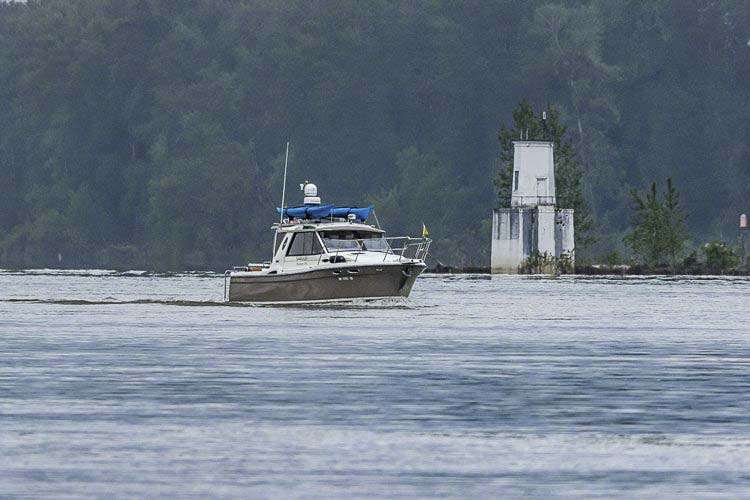The three options for ocean salmon fisheries were approved Tuesday for public review by the Pacific Fishery Management Council
VANCOUVER – Fish managers have developed options for Washington’s ocean salmon fisheries that reflect concerns over chinook stocks and optimism about improved returns of coho projected this year.

The three options for ocean salmon fisheries were approved Tuesday for public review by the Pacific Fishery Management Council (PFMC), which establishes fishing seasons in ocean waters three to 200 miles off the Pacific coast.
The three alternatives are designed to protect the low numbers of chinook expected to return to the Columbia River and Washington’s ocean waters this year, said Kyle Adicks, salmon fisheries policy lead for the Washington Department of Fish and Wildlife (WDFW).
“With these alternatives in hand, we will work with stakeholders to develop a final fishing package for Washington’s coastal and inside waters that meets our conservation objectives for wild salmon,” Adicks said. “Anglers can expect improved opportunities to fish for coho salmon compared to recent years while fishing opportunities for chinook likely will be similar to last year.”
Similar to 2018, this year’s forecast for Columbia River fall chinook is down roughly 50 percent from the 10-year average. About 100,500 hatchery chinook are expected to return to the lower Columbia River. Those fish – known as “tules” – are the backbone of the recreational ocean fishery.
Meanwhile, fishery managers estimate 905,800 coho will return to the Columbia River this year, up 619,600 fish from the 2018 forecast. A significant portion of the Columbia River run of coho contributes to the ocean fishery.
State fishery managers are working with tribal co-managers and NOAA Fisheries to take into account the dietary needs of southern resident orcas while developing salmon fishing seasons. The declining availability of salmon – southern resident orcas’ main source of prey – and disruptions from boating traffic have been linked to a downturn in the region’s orca population over the past 30 years.
“We will continue to assess the effects of fisheries on southern resident killer whales as we move towards setting our final fishing seasons in April,” Adicks said.
The options include the following quotas for recreational fisheries off the Washington coast:
- Option 1: 32,500 chinook and 172,200 coho. Marine areas 3 (La Push) and 4 (Neah Bay) would open June 15 while marine areas 1 (Ilwaco) and 2 (Westport) would open June 22. All four areas would be open daily and La Push would have a late-season fishery under this option.
- Option 2: 27,500 chinook and 159,600 coho. Marine areas 1, 3, and 4 would open daily beginning June 22 while Marine Area 2 would open daily beginning June 29. There would be no late-season fishery in Marine Area 3.
- Option 3: 22,500 chinook and 94,400 coho. Marine areas 1, 3, and 4 would open daily beginning June 29 while Marine Area 2 would be open five days per week (Sunday through Thursday) beginning June 16. There would be no late-season fishery in Marine Area 3.
Fisheries may close early if quotas have been met. For more details about the options, visit PFMC’s webpage at https://www.pcouncil.org/blog/, where information can be found about a March 25 public meeting in Westport on the three alternatives for ocean salmon fisheries.
Last year, the PFMC adopted recreational ocean fishing quotas of 27,500 chinook and 42,000 coho.
Chinook and coho quotas approved by the PFMC will be part of a comprehensive 2019 salmon-fishing package, which includes marine and freshwater fisheries throughout Puget Sound, the Columbia River and Washington’s coastal areas. State and tribal co-managers are currently developing those other fisheries.
State and tribal co-managers will complete the final 2019 salmon fisheries package in conjunction with PFMC during its April meeting in Rohnert Park, Calif.
Several additional public meetings are scheduled in March and April to discuss regional fisheries issues. The public will also soon be able to comment on proposed salmon fisheries through WDFW’s website at https://wdfw.wa.gov/fishing/northfalcon/, where a list of scheduled public meetings can be found.
The Washington Department of Fish and Wildlife is the primary state agency tasked with preserving, protecting and perpetuating fish and wildlife and ecosystems, while providing sustainable fishing and hunting opportunities.




